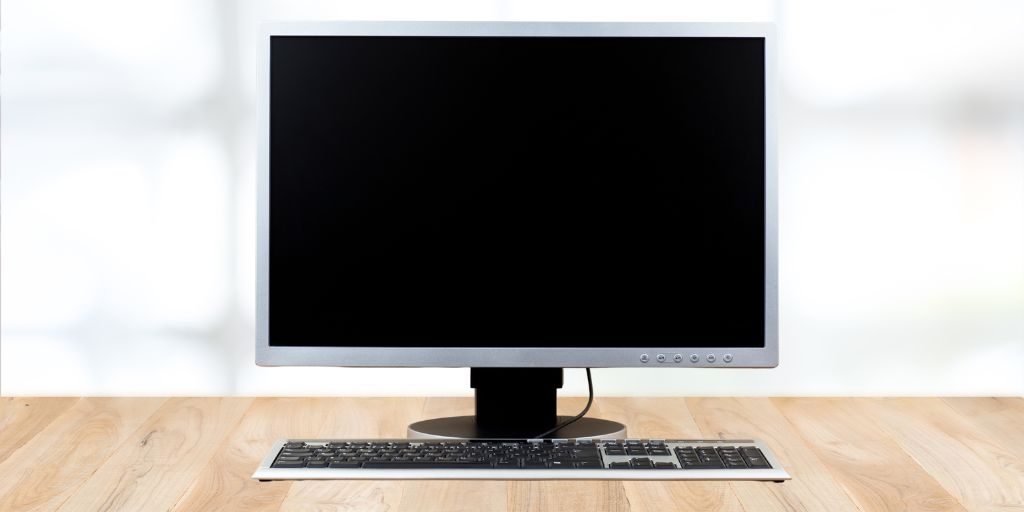When your monitor goes black, it can be frustrating; especially if you’re in the middle of a video call or trying to edit an important document. In order to fix your monitor, you will need a few things; some computer-savvy knowledge, and the ability to read a list of tools. This article will instruct you how to fix monitor randomly going black.
What factors cause the monitor to go black randomly?
The Monitor may go black randomly for a variety of reasons. Some of the factors which cause the issue are:
- Dirty Monitor: If the monitor is dirty, it will not be able to generate the correct amount of light which will cause it to go black randomly.
- Defective Power Supply: If the power supply is defective, it could cause the monitor to go black randomly.
- A Broken Monitor: If there are any broken parts in the monitor, this can cause it to go dark randomly.
- External Factors: Other external factors like powerful light or a power surge can also cause the monitor to go out and turn black.
- Faulty Drivers: If there are faulty drivers installed on the computer, this can also lead to the monitor going blank or turning into a dark screen.
- Overloaded Processes: If there are too many processes running on the computer at once, this can also cause the monitor to go blank or turn black momentarily.
Also check: How to fix check signal cable on Samsung monitor?
How to fix monitor randomly going black? 10 solutions
If your monitor suddenly turns black, there are also some methods you can attempt to resolve the problem. Check out the following solutions to get out of this trouble.
Solution 1: Check HDMI/VGA Cable
If your monitor randomly goes black, there is a chance that your HDMI or VGA cable is the problem. To check if your cable is the issue, first, try disconnecting both cables and plugging them back in. If the problem still occurs, you can test your cable by connecting an external monitor to the same port on your computer and see if the issue persists. You may need to change your cable if none of these fixes works.
Solution 2: Disabling Overclocking
If your monitor randomly goes black, it could be due to overlocking. Follow these steps to disable overclocking:
- Open the processor options in your computer’s BIOS. This will let you modify the processor’s settings.
- Disable “Overclocking” from the list of options.
- Save and exit the BIOS setting.
- Try performing a stress test again and see if the issue persists. If it does, your computer may need new cooling or other repairs.
Solution 3: Replace The Battery If It Is Too Old
If your monitor seems to be randomly going black, there is a chance that the battery is too old and needs to be replaced. To test if this is the case, follow these steps:
- On your monitor, press the power button for about five seconds. If the screen goes blank, then you need to replace the battery. If you see a blue light coming on after pressing the power button but before the screen goes blank, then the battery is still good and you can continue with step 2.
- Disconnect your monitor from your computer by unplugging both cables from the back of your monitor.
- Open up your laptop or desktop and locate your battery (it will likely be a small white or silver object).
- Replace your outdated battery with a fresh one per the manufacturer’s recommendations.
- Reattach your monitor to your computer by plugging in both cables and turning it on. If everything works fine, congratulations!
Solution 4: Upgrade Graphics Drivers
If your monitor randomly goes black, there might be a problem with your graphics drivers. Many times, this can be resolved by upgrading your drivers. If you want to update your graphics drivers, do the following:
- Download the most recent driver for your card or chipset from the manufacturer’s website.
- Install the driver according to the instructions provided by the manufacturer.
- If necessary, restart your computer.
- Check if the problem persists after upgrading your graphics drivers. If not, you can try troubleshooting other issues first before upgrading your graphics drivers.
Solution 5: Factory reset your monitor
If your monitor is not responding or seems to have a problem, it might be time for a factory reset. This will clear all the settings and data on the monitor and should solve any problems. Follow these steps to factory reset your monitor:
- Turn off your monitor.
- Hold down the power button until the power LED turns off.
- Wait two seconds, then release the power button.
- Press and hold the Menu button until the Power Off menu appears.
- Select Factory Reset.
- Release the Menu button and press the Enter key.
- The monitor will restart and you will be asked to choose an exit mode.
- Choose OK to confirm and your monitor will factory reset.
Solution 6: Upgrade Windows/Your Operating System To The Latest Version
If you’re experiencing problems with your monitor going blank or randomly turning off, it might be time to upgrade to the latest version of Windows. Here’s how to do it:
- Click on the Start button and type “update” into the search box. You’ll see a list of results that show you all of the available updates for your computer.
- Double-click on one of the updates to open the update page for that particular package. If there are any additional steps you need to take before installing the update, they will be detailed on this page.
- Once you’ve completed all the required steps, click on “Install”. Your computer will now start downloading and installing the update.
- After the update has been installed, restart your computer so that it can apply these changes.
Solution 7: Repair corrupted system files
If your computer’s monitor randomly goes black, there is a good chance that the system files on your hard drive are corrupted. This can be caused by a number of different factors, including a virus, a power outage, or simply incorrect file permissions. To repair the system files and restore normal operation to your monitor, follow these simple steps:
- Boot your computer into Safe Mode. Safe Mode will allow you to access the operating system without any programs running in the background.
- Run a scan for viruses using an antivirus program. Once the scan is complete, remove any suspect files from your hard drive.
- Open Windows Explorer and navigate to C:\WINDOWS\system32\drivers\etc\. Scroll down until you find “hosts”. Right-click on “hosts” and select “Copy”.
- Open Notepad and paste the text from “hosts” into it. Make sure all of the quotes are marked correctly and that each line is separated by a comma. To find particular words or phrases, press Ctrl+F on a PC or Command+F on a Mac.
- Click on the “Apply” button and then click on “OK”.
- Close Windows Explorer and reboot your computer.
Solution 8: Change Computer Power Settings
Computer screens often go black or become distorted when the power to the monitor is cut suddenly. This can occur when a user turns off their computer without properly disconnecting the power cord, or when a power outage occurs. To get around this issue, be certain to use the proper power settings for your computer monitor.
Some common power settings for monitors are:
Power Off Timer: This allows you to set a timer that will shut down your computer after a certain amount of time has passed. This can help prevent sudden shutdowns that could damage your computer screen.
Low-Power Mode: If you rarely use your monitor and would like to save energy, try setting it to low-power mode. This will reduce the amount of energy needed by the monitor, but it may not be as effective in terms of image quality.
Solution 9: Check External Power Supply
An external power supply is sometimes the only solution to a monitor that randomly goes black. If your PC has a built-in graphics card, you may not need an external power supply. In some cases, you can check if your monitor needs an external power supply by plugging it into another outlet and testing the voltage. If the voltage is low, your monitor might need an external power supply.
Solution 10: Uninstalling/Disabling third-party programs
If you are experiencing random blackouts or your monitor is just going black for no reason, there may be a third-party program affecting your computer. To uninstall these programs, follow the steps below:
- Click the “Start” button and type “MSConfig” in the search bar.
- When the “Microsoft Configuration Utility” window opens, click on the “System” tab and then on the “Administrative Tools” sub-tab.
- Choose “Uninstall a Program” from the menu and press the “Next” button.
- Scroll down until you see the third-party program that you want to uninstall and select it using either the cursor or the mouse pointer.
- Click on the “Uninstall” button next to that program and wait for it to uninstall before clicking on the “Close” button in Microsoft Configuration Utility. Restart your computer after uninstalling all of your third-party programs to make sure that they are completely gone.
How to Fix Black Screen Issue on Windows 10?
There are a few steps you may take to try to resolve the black screen issue if it is affecting your Windows 10 device.
- Make sure your graphics card is updated first.
- If you’re using an older graphics card, it may not be able to run the latest version of Windows 10. Attempt refreshing your graphics driver as well.
- You can try erasing and reinstalling Windows 10 if that doesn’t work.
- If all else fails, your last resort is to reset your computer to its default settings.
Check More: How to change input on Sceptre monitor?
Conclusion
If your monitor randomly goes black, there are a few things you can do to try and fix the issue. First, make sure that the power cables are securely plugged into both your computer and your monitor. Next, make sure that your monitor is properly connected to your computer using an appropriate cable.
Finally, check to see if there is any debris or dust on the lens of your monitor that could be blocking the light from entering the panel. If none of these steps resolves the problem, it may be time to replace the monitor. Thank you for visiting our blog article about how to fix monitor randomly going black. We hope this article helped you fix the issue on your own!

